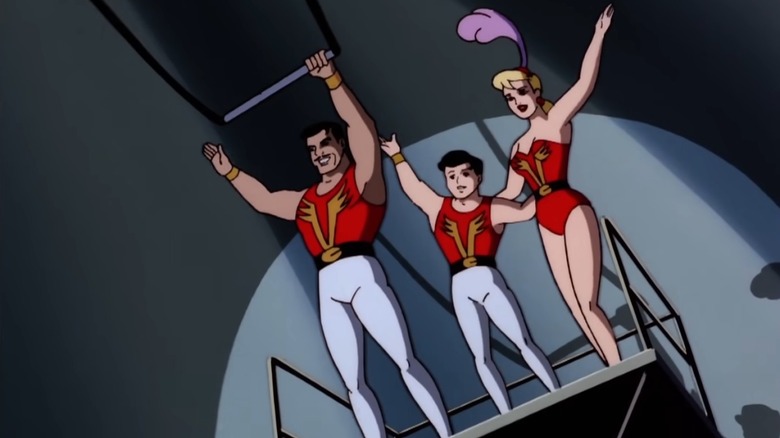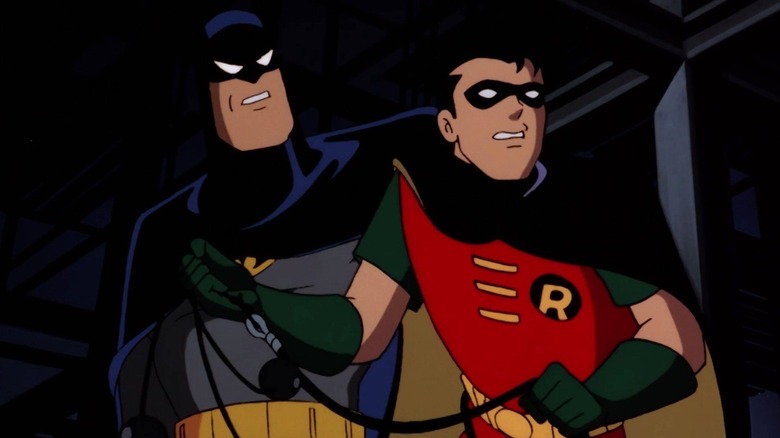A Batman: The Animated Series Emmy Win Happened Thanks Partly To FOX Censorship
"Batman: The Animated Series" is one of the most celebrated cartoons ever made. It not only gave us a near-perfect portrayal of Gotham City and its Caped Crusader, a nuanced take on popular comic villains, but also had a stunning visual style that took advantage of the medium of animation to translate the world of comics to TV. From the use of black paper backgrounds to give Gotham a darker look, to the Arc Deco influence, no show looked or felt like this one.
As unique as "Batman: The Animated Series" was, it was still a FOX show aimed at kids, so certain things were toned down. There's the infamous image Bruce Timm made with the nine big taboos the show was not allowed to do, and also a story of how the writers were not allowed to turn Batman into a vampire in an episode.
And yet, despite the target demographic and studio notes toning down some things, "Batman: The Animated Series" remains arguably the most mature Batman project to date. As writer Henry Gilroy told us, the goal was to "make these stories not adult in nature, but just not aimed down at kids." From the emotionally poignant and nuanced portrayal of the Dark Knight to episodes like "Heart of Ice" forever changing the character of Mr. Freeze, they certainly achieved that.
More often than not, the studio notes limiting what the writers and animators could do led to some of the strongest creative moments in the entire series, like the Emmy-winning episode "Robin's Reckoning" which overcame some big limitations to deliver one of the best scenes in the entire series.
Pushing the limits
In a 2017 oral history of the cartoon, Vulture spoke with background painter and co-creator Eric Radomski about the Emmy-winning episode, and the co-creator revealed that they originally wanted to show Robin's parents fall to their deaths in the circus when their trapeze act is sabotaged by mobsters. "We knew they wouldn't let us show it," Radomski said. "We couldn't even show the result of it. We just had to get the emotion across that his parents definitively died."
The standards and practices department at Fox always had issues with the portrayal of violence (in a show about a vigilante who fights people, the key word being "fights") and especially death. And yet, that limitation got them to think of creative ways to portray the stakes. According to Radomski tells it, if they couldn't show the parents dying they could show something else that would make it clear they're gone, which resulted in the image of the trapeze rope with the spotlight on it until we see only one sheared rope.
This is much better than any actual death scene. It's subtle and visually striking, and more meaningful because the focus is on the equipment they trust their lives to every night. When we see the sheared rope, it's like something reliable just snapped, like Robin's belief that his parents would be around forever. "It was something you could have only dreamed of at that time in animation, to do it for television," Radomski added. "It was the height of what we could do as a dramatic animated show and still be entertaining."

